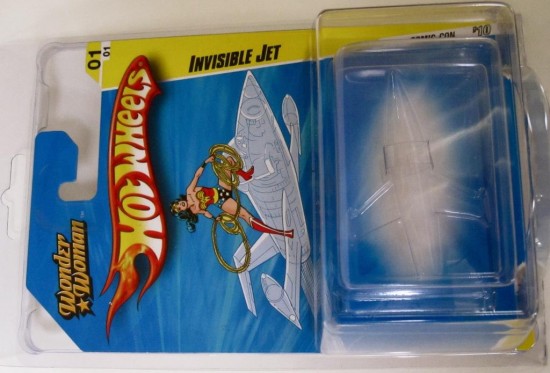I was at Comic Con about 10 years ago when I wandered past the Mattel booth. They were selling hard-to-find Hot Wheels and the area was packed with people hoping to add things to their collection. One item, in particular, caught everyone’s attention. It was a model of Wonder Woman’s invisible jet. The jet came in a package like you’d see hanging at any typical Hot Wheel display. Through the clear plastic, you could see an insert molded to the shape of an airplane. And it was empty.
The whole thing was a joke. Mattel made several thousand very pretty, but empty, boxes. Why? Because Wonder Woman’s jet is invisible. The joke was that the jet was in the box, you just couldn’t see it.

And, because Mattel made a limited number of empty boxes, people flocked to buy them at about twenty bucks a pop.
You see, Mattel knew that if they made something that looked good, and gave the impression that it was rare, people would want to buy it. If the package appeared to be valuable, people would buy it regardless of whether there was anything valuable inside.
Yesterday, I started thinking about how something similar is playing out today.
We’re all anticipating that something big will happen in the next week. We’re hoping that good will prevail and that the old adage “cheaters never win” proves true. And, if you’re like me, you’re spending way too much time looking for information.
But information is hard to find. The mainstream media is a useless propaganda tool and Big Tech has blocked many or our usual sources to keep us in the dark. And, in the case of Parler, Big Tech has simply eliminated an entire platform used by millions of people.
This has created an information vacuum. Information has become rare.
So, we all page through MeWe, Gab and other alternative networks looking for a morsel of information. And, because we really hope to find something that will indicate that the good guys are winning, we can see things that aren’t there.
We don’t have access to our usual trusted sources, so some of the posts made by people we don’t know are starting to look pretty good. They wrap their posts up in pretty packages that look like legitimate news sources. They try to give you the impression that their information is rare by using words such as “Breaking!”, “Exclusive!” or “Just In!”.
They want you to buy what they’re selling. They’re hoping you’ll buy it even though it contains nothing of value.
Some of these are people legitimately trying to be helpful. Others are people trying to get you to bite on their clickbait so they can make ad revenue. Still others are simply trying to take advantage of the situation to increase their followers. And, some people are deliberately spreading misinformation.
Here’s the tricky part. It’s difficult to tell them apart.
It’s easy for someone to make you see connections between things when you’re already primed to see them. It’s easy for someone to make you confuse conspiracy with coincidence. It’s easy for someone to make you believe that their box is valuable. Because your brain is working against you. Your brain doesn’t like the information vacuum, so it tries to fill it. Sometimes with imaginary things.
These days, I’m even more skeptical than I usually am. I work diligently to make sure that I don’t see things that aren’t there, just because I want to see them. It’s not always easy, but it’s important.
I know what you’re thinking. You’re thinking, “Mike, how can I make sure that I’m not fooled by misinformation”?
That’s a great question. I’m glad you asked.
There are two rules I follow to help keep my imagination from getting away from me.
- If something seems to be too good to be true, it’s probably not true.
- If the information comes from “anonymous sources”, it’s probably bullshit.
If you keep those two things in mind, I think you’ll find it easier to spot posts that are trying to get you to buy their fancy packaging regardless of whether there’s anything of value inside.


